Sort of Sneaker’d Up On Me
Panthorn Park, Southington
October 2023
I’ve written before that I think “Panthorn” is just a cool name. And it coulda shoulda been the name of Southington. Samuel Woodruff, Southington’s first white settler, moved from Farmington to the area then known as “Panthorne” that was settled in 1698. The settlement grew, prospered, and came to be known as “South Farmington” and then later, the shortened version, Southington.
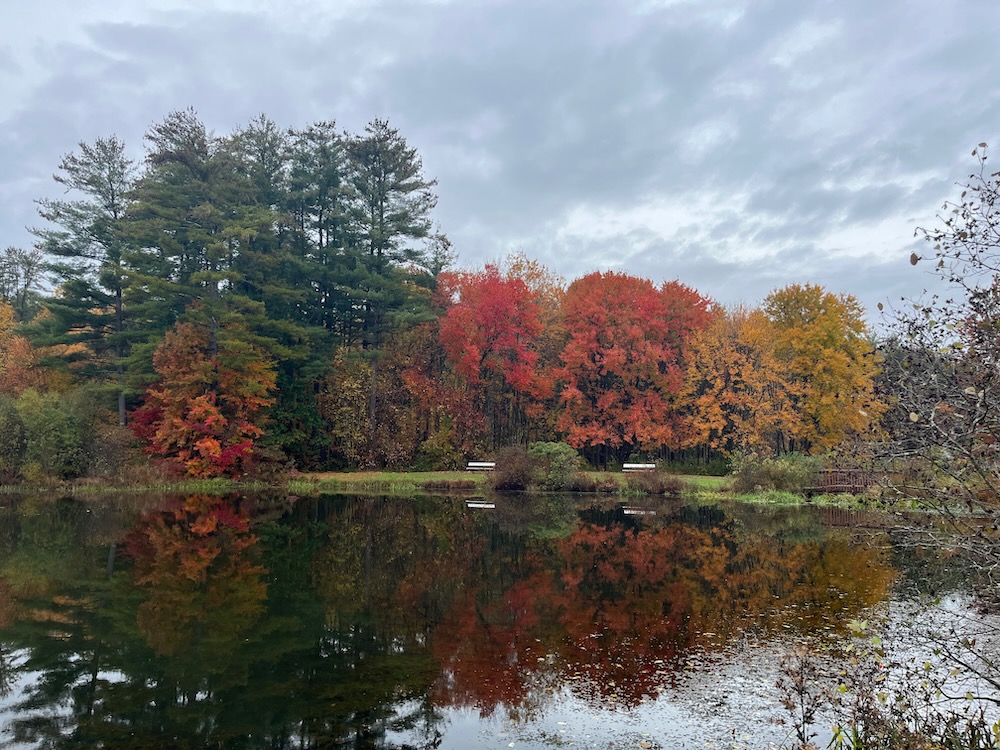
Booooring. Someone should start one of those useless online petitions.
At least Southington retains the name Panthorn at Panthorn Park. (There’s also a dead-end road named Panthorn Trail which I know about because it’s provides parking for a Tunxis Trail side-trail.)
Panthorn Park is a very nice place that Panthorners Southingtonites should be proud of. Lots of woods, a cool looking playground, basketball and tennis courts, lots of ball fields, and a decent disc golf course. Check out this 360-degree drone shot from the middle of the park.
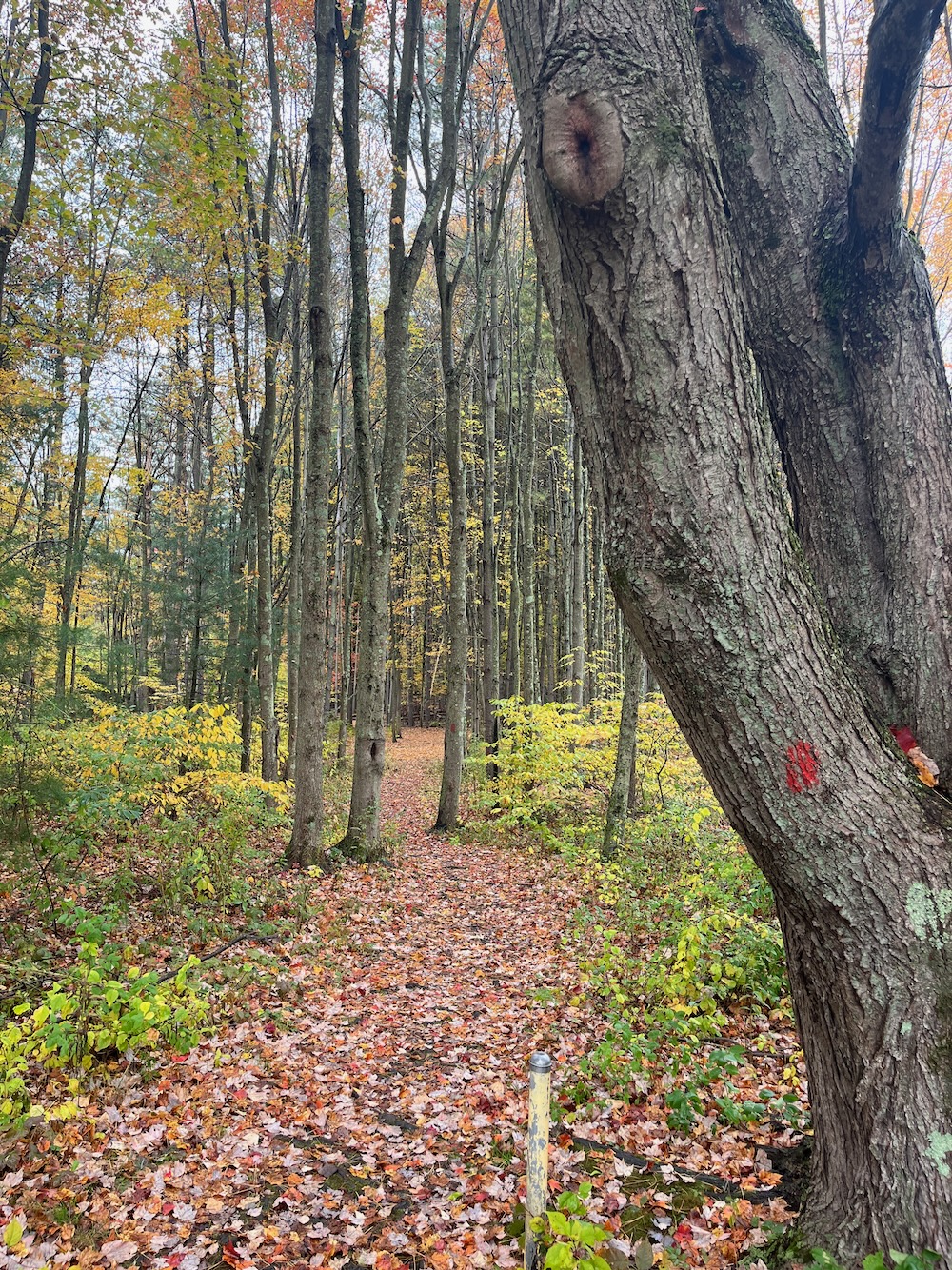
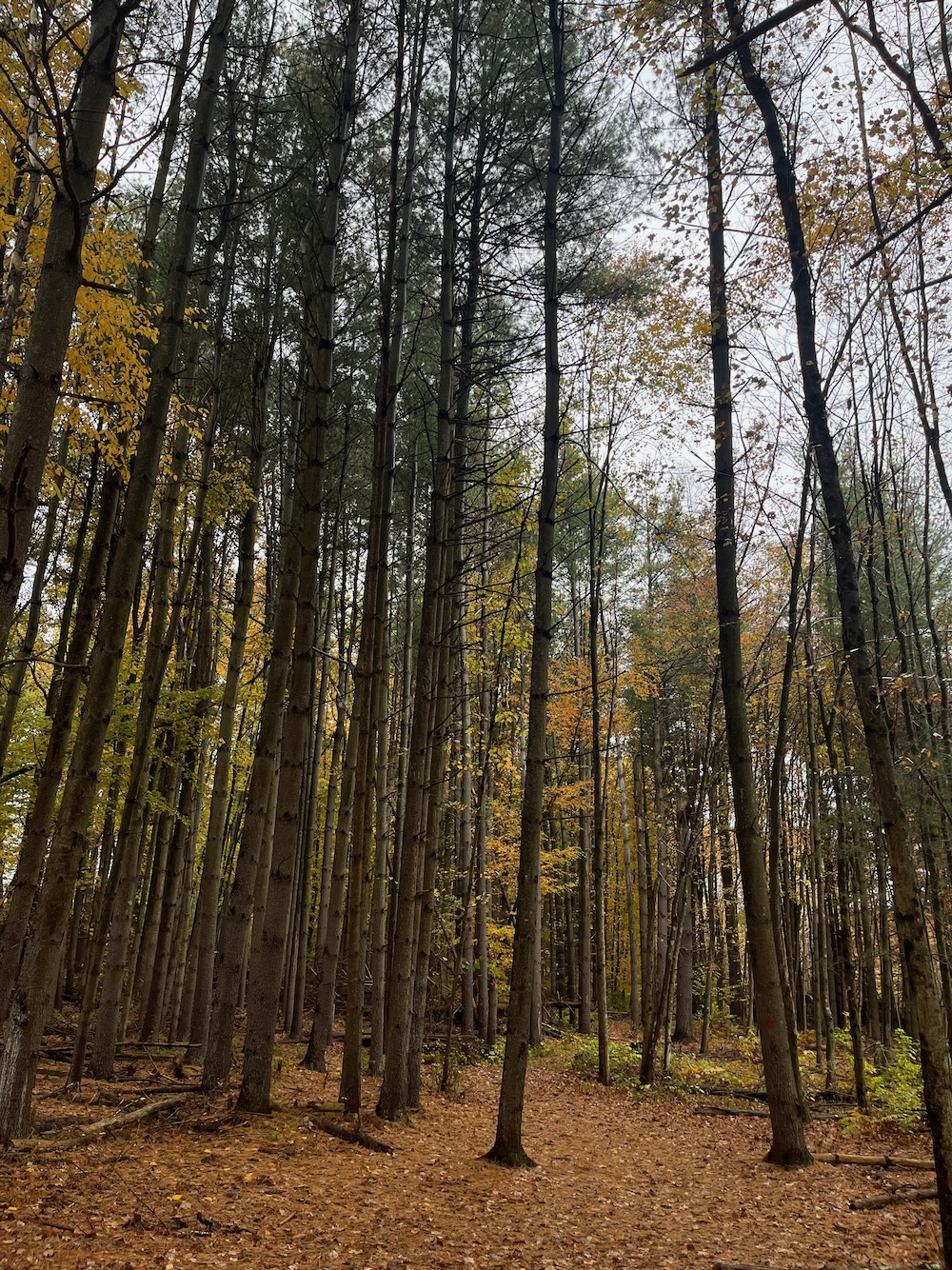
Let’s get back to ground level and check out the trails. There are maybe just over a mile of trails here, and they are impressively cleared and blazed for a town park.
Most start behind the little pond near the mid-park parking lots, and offer a variety of choices. I chose to do the red loop first, which took me west and then north to a powerline cut. After a surprisingly stunning walk though a large white pine stand, I thought I was in for a quick, typical flat central Connecticut town park loop trail.
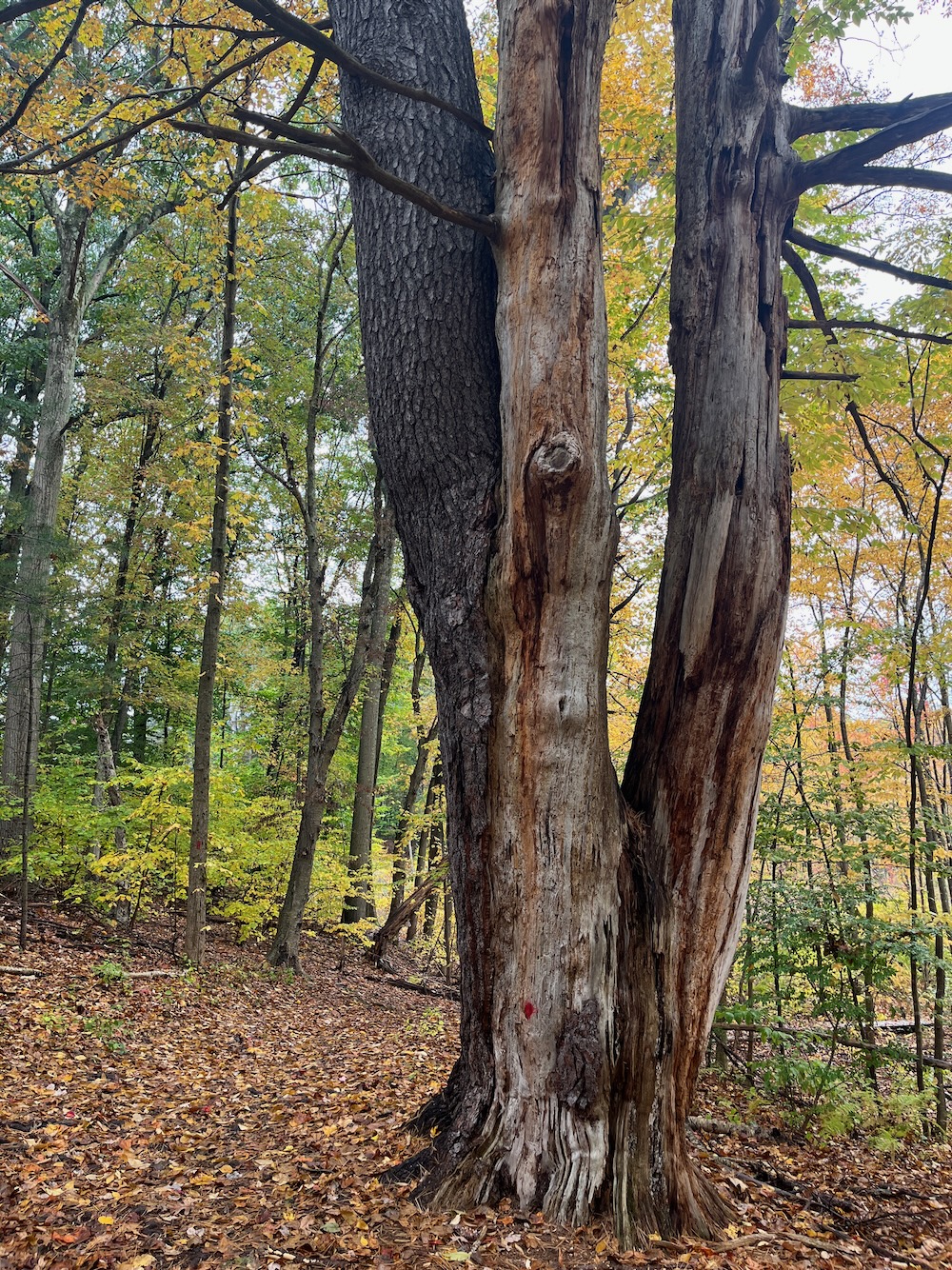
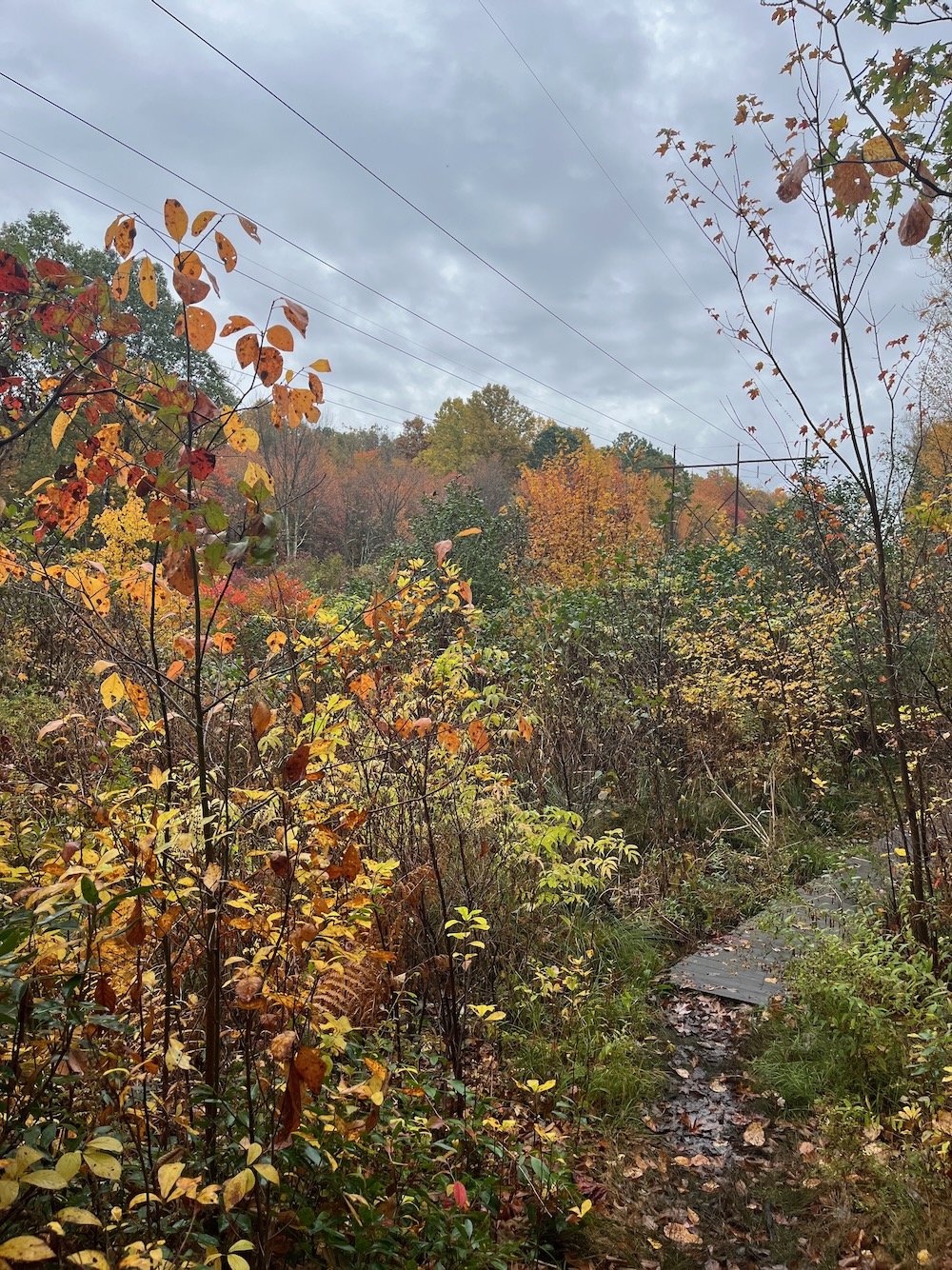
According to the town’s website, this “red trail” is made up of several trails: Swamp Walk Trail, Cabbage Trail, Mound Ridge Trail, and Berm Trail. Trust me, it’s just the Red Trail. Except there is an ipmressive boardwalk along the “Cabbage” section. This took me out to the powerline cut and… what’s this? another trail heading north across the cut?
Indeed it is. it’s not on the sign at the trailhead, but there are faded grey blazes and the trail is really well cleared for a non-trail trail. I decided to follow it along what appears to be a small canal. The woods are pretty and I could see the Panthorn disc golf course on the other side of the waterway. I ultimately wound up at some small private pond that seems to be a Southington secret.
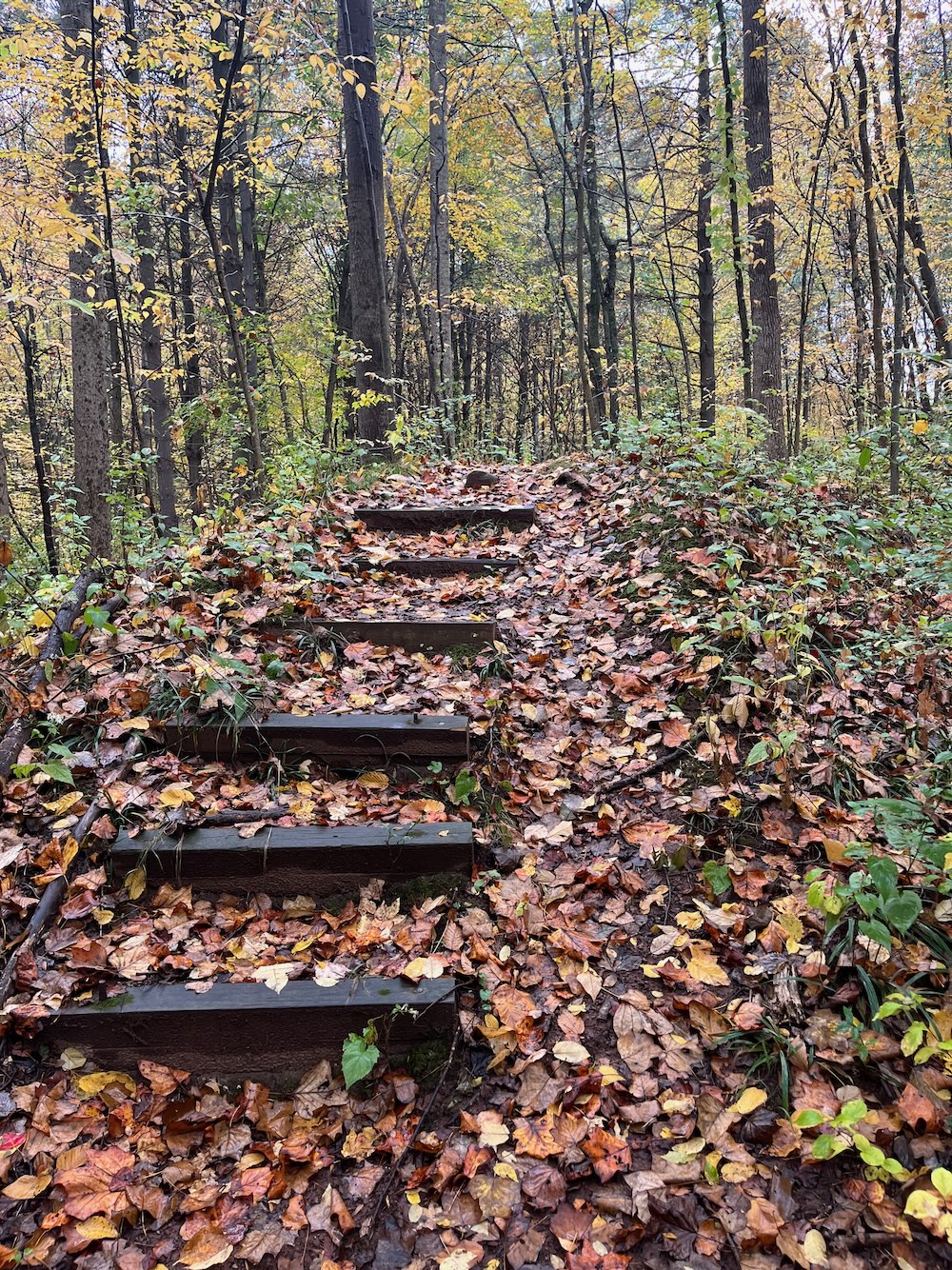
Quite real trailwork on unpublished trail
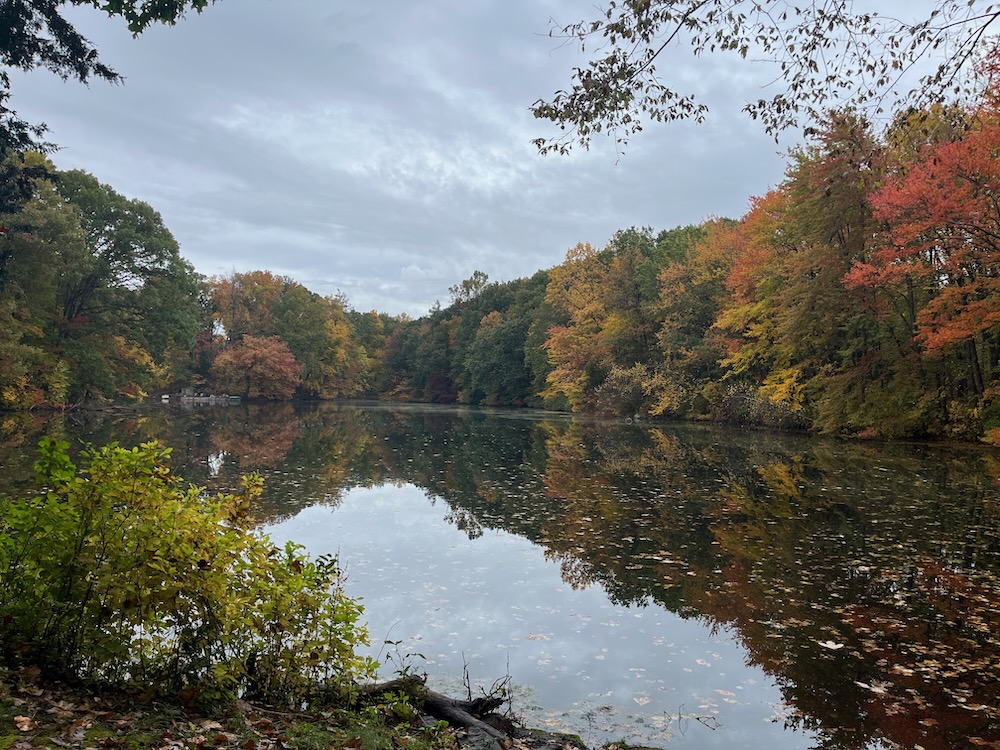
Secret Pond
I think the fake trail loops around, but I simply returned the way I came and continued the red loop. More boardwalks, more white pines, and before I knew it, I was behind the basketball courts.
This trail has an attendant nature guide that has 20 “stops” along its way and of course the guide explains all the usual stuff – but there is more here than is typical.
I’ll pass along a few of the highlights below. Trust me, I’ve walked a ton of these trails and have skimmed all of their guides and this is some really good, unique stuff.
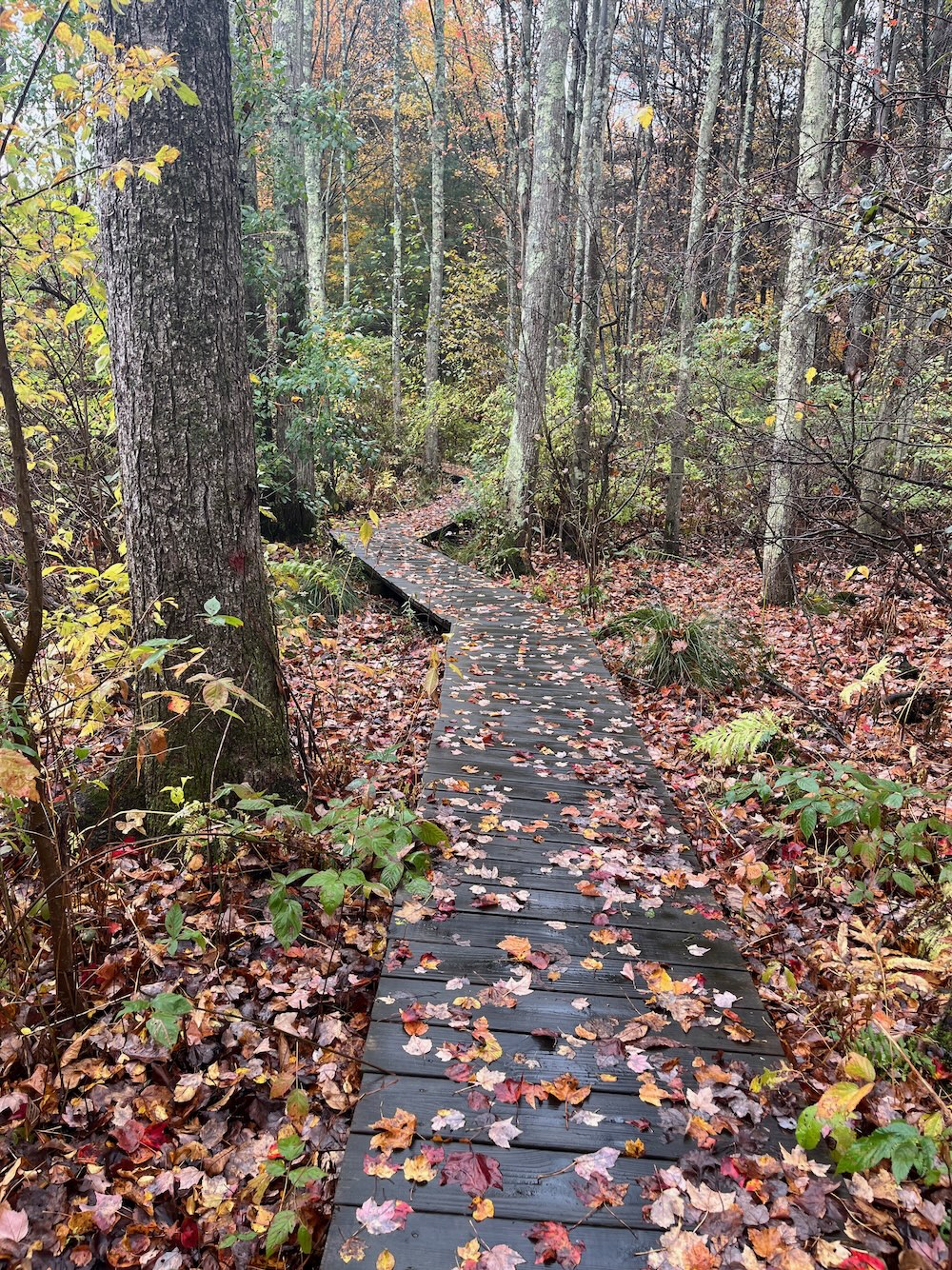
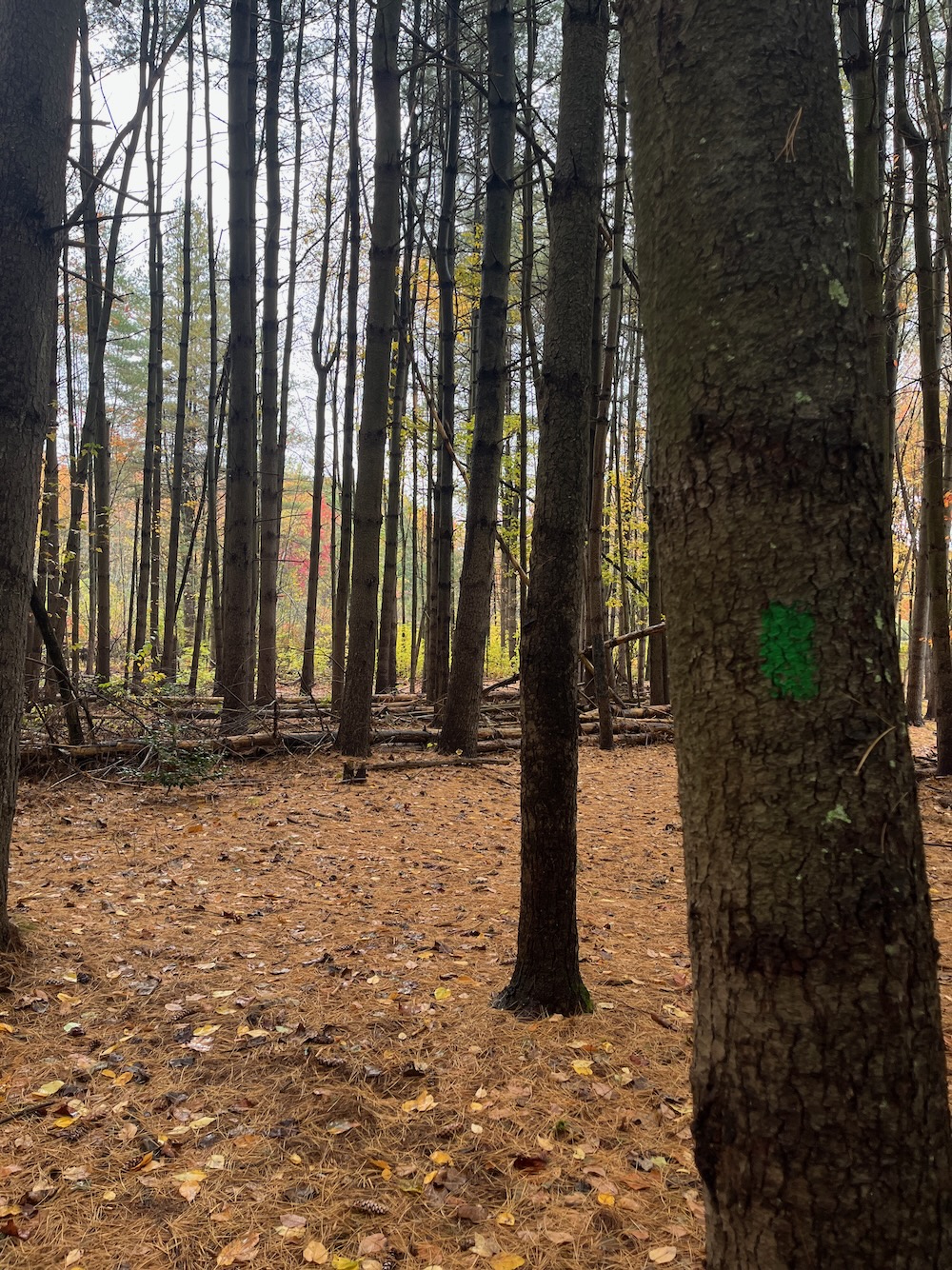
Stop 4 – Tussock Sedge/Red Maple
Observe the young red maple tree growing on tussock sedge. This is a classic example of how a forest begins growing in very wet places. Red maples gain a foothold by germinating on the tussock sedge which is above the water saturated soils. In spring and summer, you can observe wildlife such as red-winged blackbirds, mallards and painted turtles. Occasionally, you may see a green heron or a great blue heron hunting for small fish and amphibians. The nesting box you see on a pole is a wood duck box. Wood ducks require cavities to nest in, unlike the mallard which nests on the ground. Man-made nesting boxes help supplement their natural nesting
cavities in trees.
Stop 6 – Eastern Red Cedar
This dead eastern red cedar (Juniperus virginiana) is testimony to a changing forest. Red cedar is a pioneer tree. It comes into abandoned fields first. As the forest grows, it gets shaded out by other trees. Red cedar needs full sun to survive. It persists only where it gets a lot of sunlight. As the forest matures, you can find the “skeletons” of red cedars in the understory. The female cedar tree produces valuable berries (actually cones) which are eaten by many types of birds, particularly cedar waxwings. In winter, cedars provide good shelter and cover.
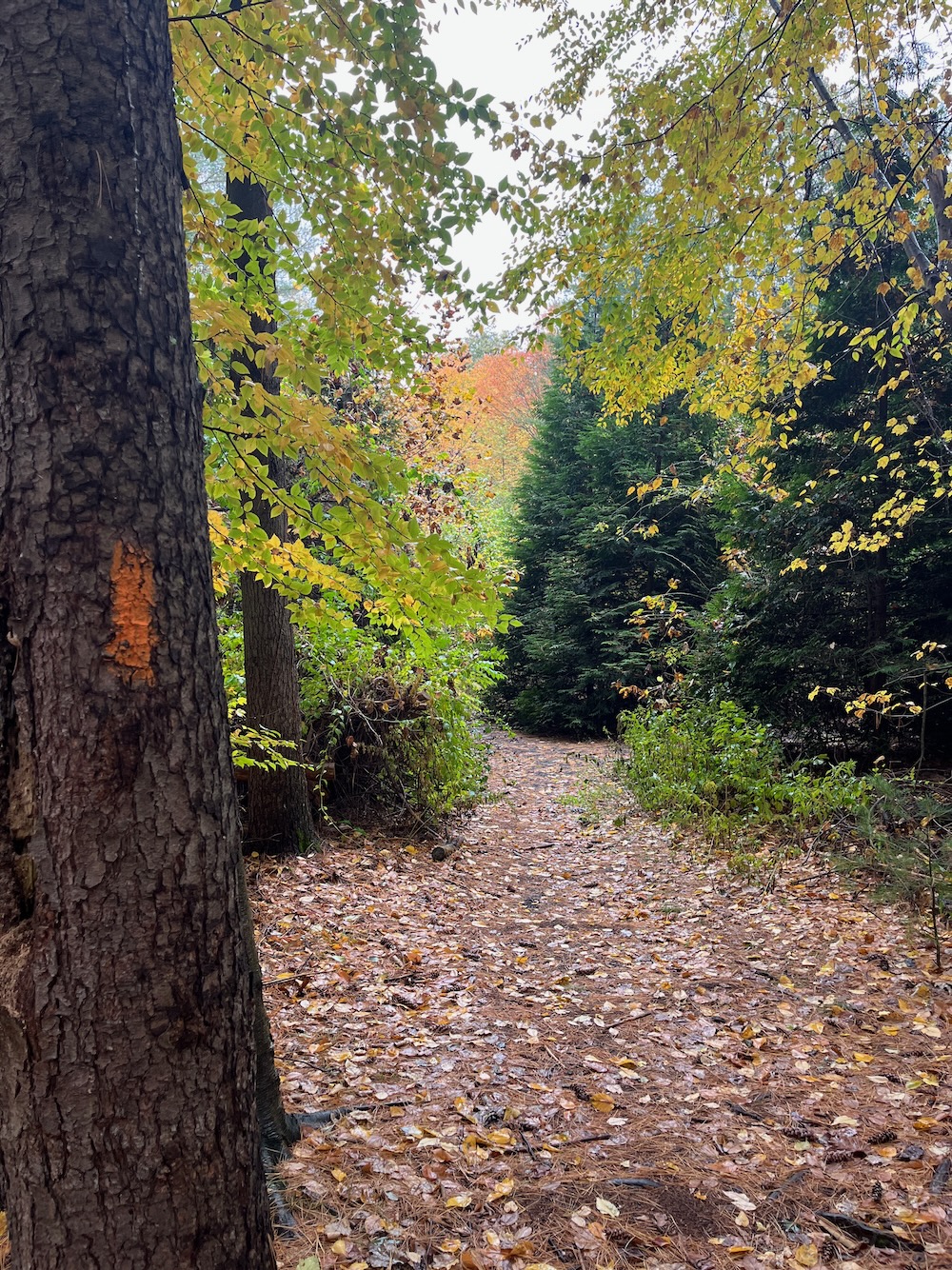
Stop 8 – Junk Yard
In the past, junkyards were common on properties. Here you will find old parts of cars and trucks. Today, there are laws which help prevent this from happening. Wildlife, such as toads, mice and cottontails, now use the junk for cover. This stop will hopefully make people think twice about spoiling nature through illegal dumping.
Stop 9 – Power of Nature
The awesome power of nature can be seen here by looking at the effects of a lightning strike on this white pine. Lightning can kill or injure trees. The dead or dying tissue, however, creates new habitat for a variety of wildlife. The “carpenter birds” such as the downy and hairy woodpeckers waste no time hammering away at the dying bark and excavate cavities to raise their young in the spring and summer. Woodpeckers also roost in the holes during cold winter nights. Secondary cavity users, such as flying squirrels, tree swallows and owls also benefit from the work of the “carpenter birds.” The secondary cavity users are not capable of excavating their own holes.
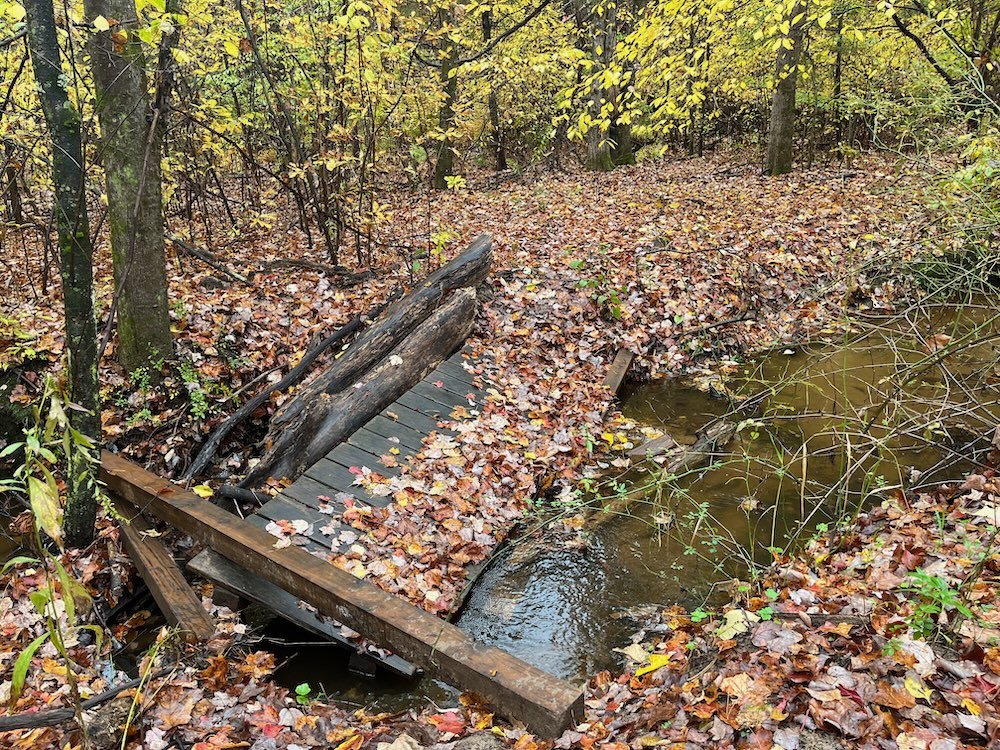
Uh-oh
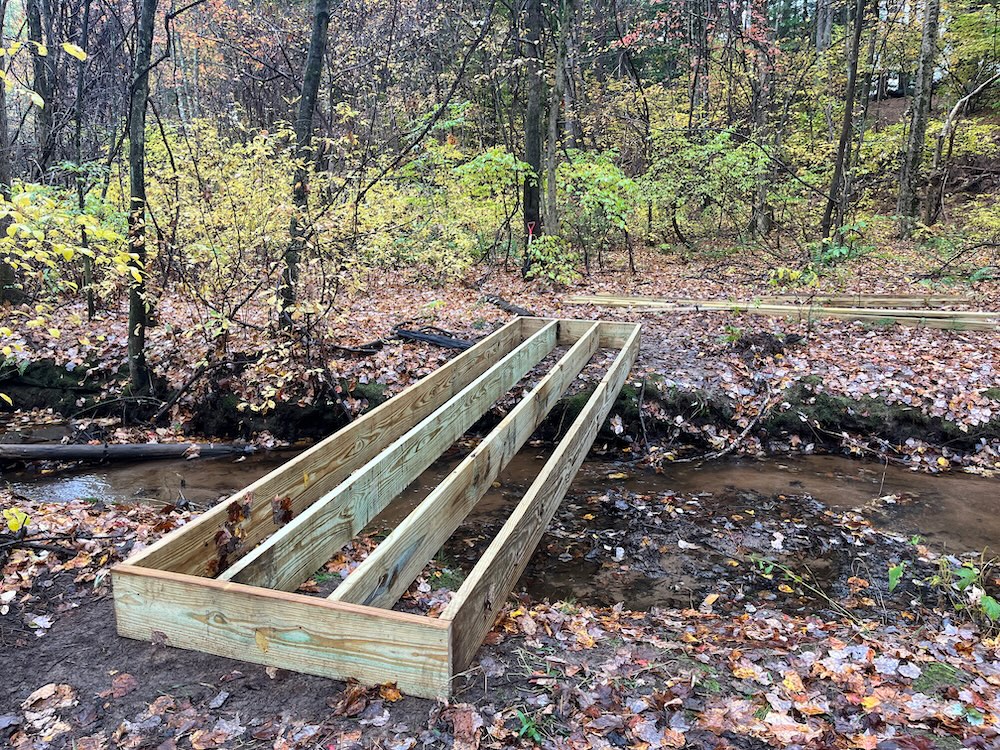
This looked safe enough… until I was halfway across and the beams were jiggling like mad.
Stop 16 – Arrowwood Viburnum
Arrowwood viburnum (Viburnum recognitum) is a valuable fall berry producer. It is one of Connecticut’s finest native viburnum. It makes a nice ornamental shrub for your yard as well. The Native American Indians used the straight shoots of this shrub to make their arrow shafts for hunting. Note the straight shoots of this shrub.
I learned some stuff here, and I hope you did as well. Anyway, the other, shorter trails here offer nice little diversions from the hustle and bustle of nearby I-84, which can be heard throughout the park. The bridge was out along the Orange (I think) Trail, but I’ll be willing to be it’ll be fixed by the time you read this.
Panthorn Park seems like a lovely place for a picnic or a walk with your little family. The boardwalks are not exactly safe when wet and covered with wet leaves, but hey, that’s all part of the adventure. I was surprised at how nice this place is… it sort of snuck up on me.
By the way, “Panthorn” sounds like a brand of sneakers, doesn’t it?
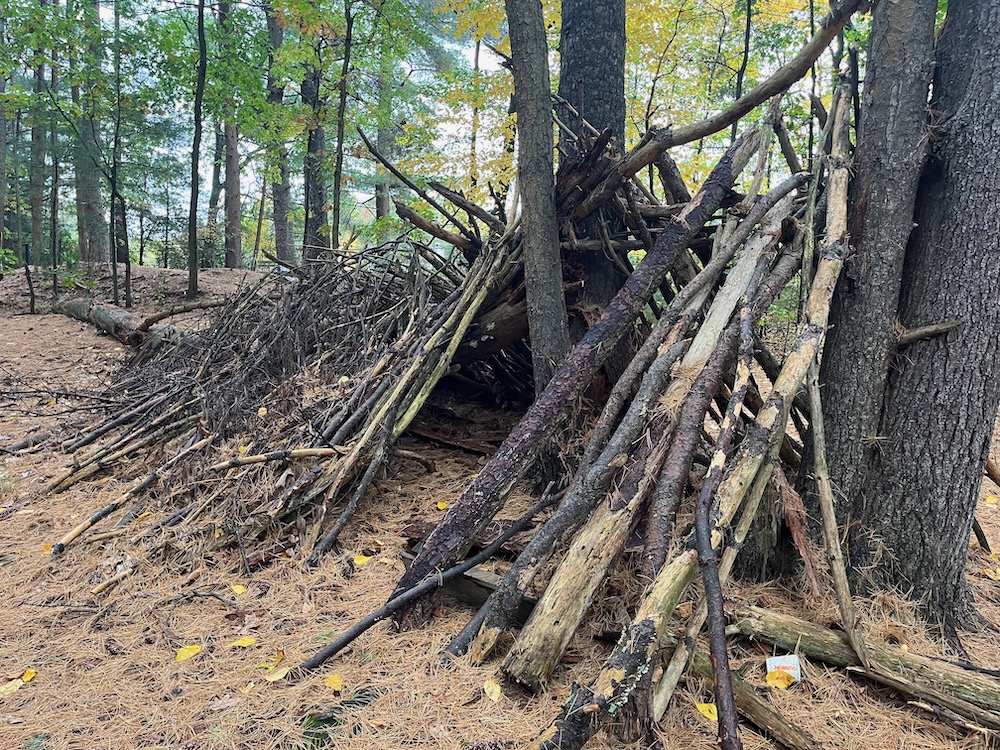
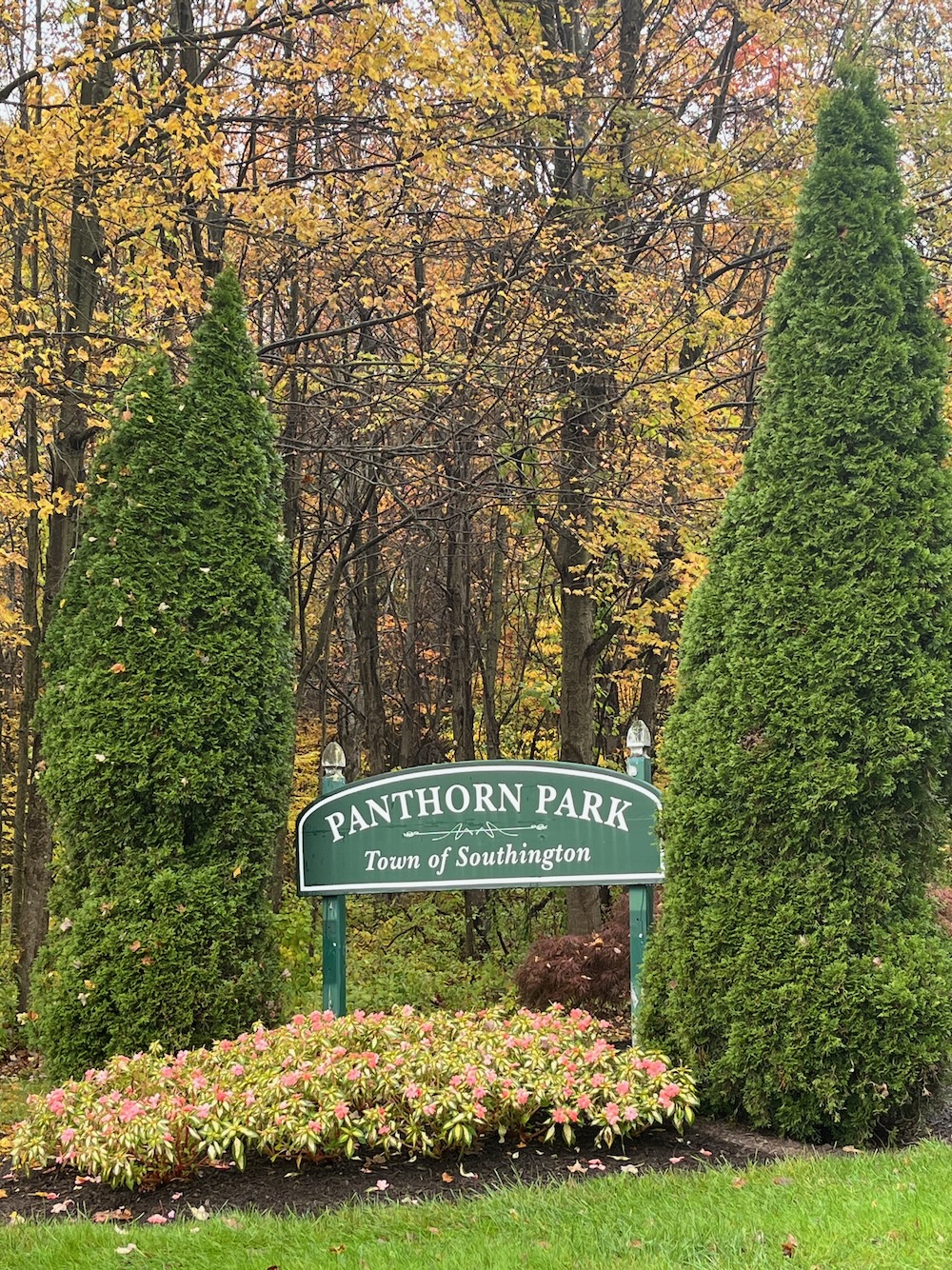
![]()

 Peter says
Peter says
November 12, 2024 at 5:33 amgive credit to Authors of trail guide Peter Picone and Greg Brezicki!